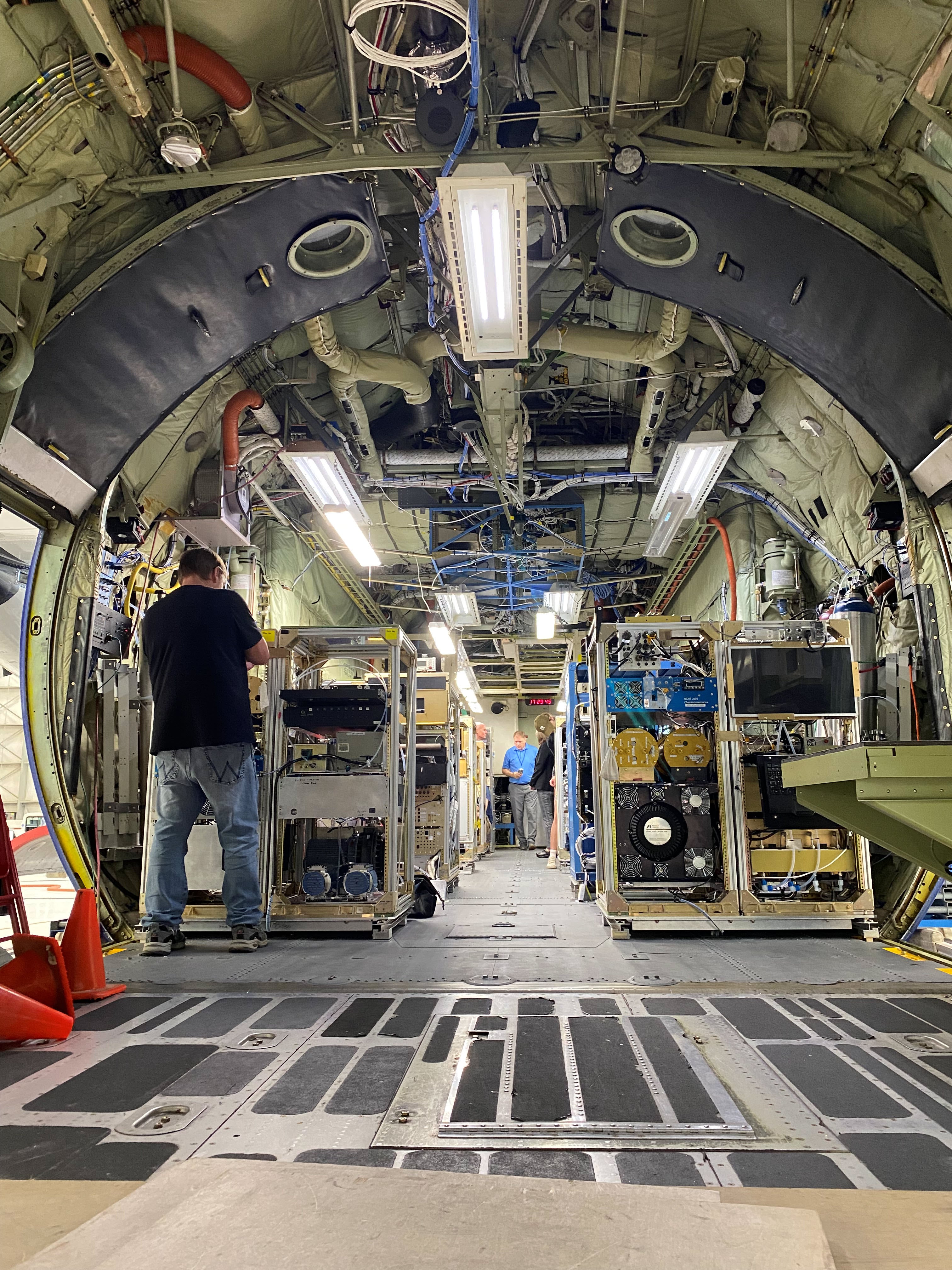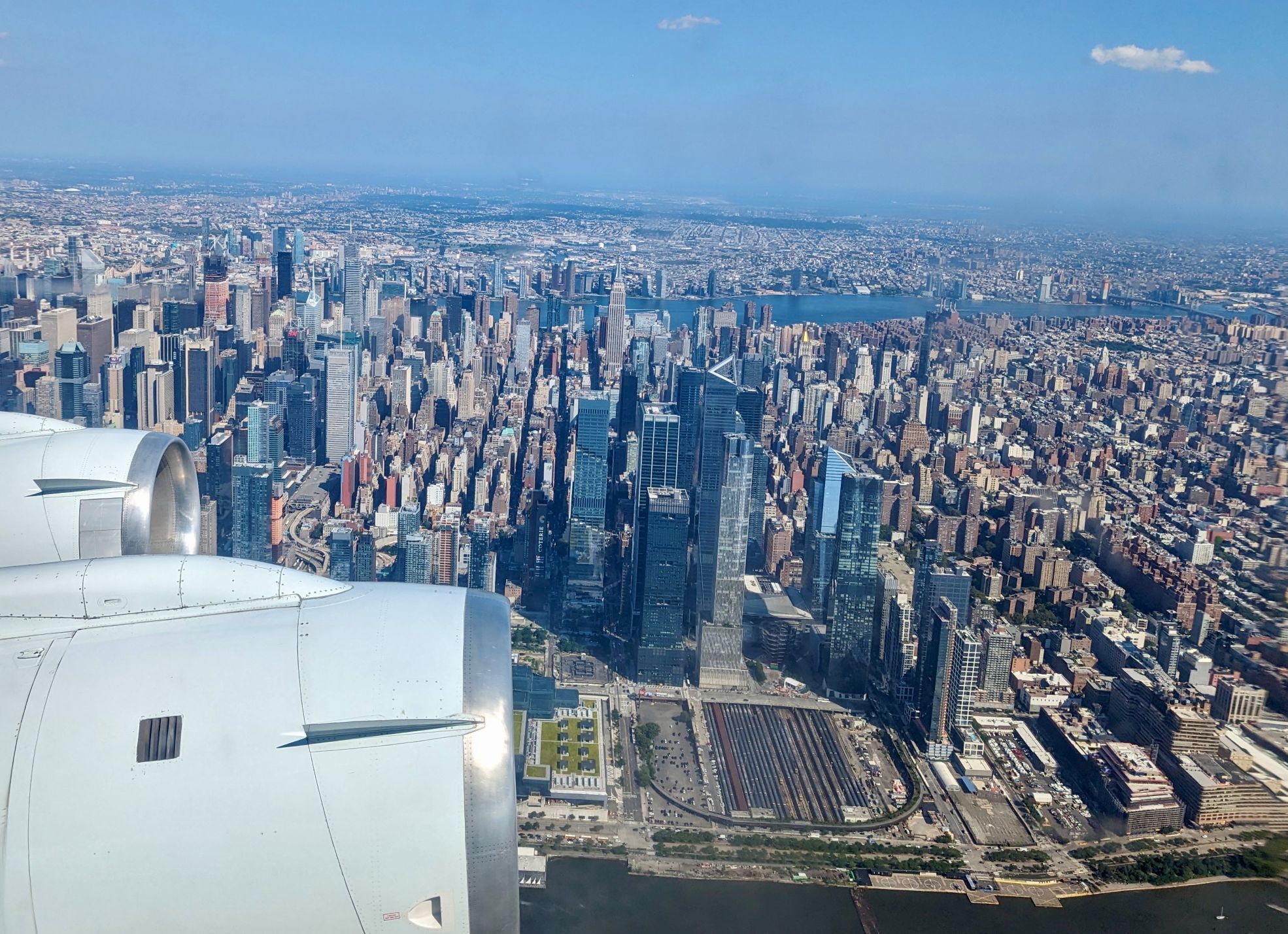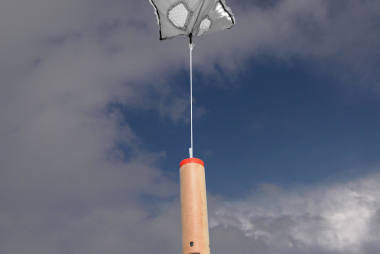Skimming the Skyline: Scientists Track Urban Emissions Over New York City
The GOTHAAM campaign takes flight on the NSF C-130 to unravel air chemistry in one of North America’s busiest urban corridors
The NSF NCAR C-130 aircraft, managed by EOL's Research Aviation Facility, stretches its wings on a recent test flight. Photo: Chris Rodgers
This summer, scientists are taking to the skies over New York City to investigate what’s in the air above one of the most populated and chemically complex regions in North America. The GOTHAAM (Greater New York Oxidant, Trace Gas, Halogen, and Aerosol Airborne Mission) campaign is using the NSF C-130 aircraft as a flying chemistry lab, measuring atmospheric composition in real time across the tri-state area. What happens when emissions from New York’s forests mix with those from the city? How does nighttime chemistry affect pollution levels by morning? Led by researchers from institutions across the US, including Stony Brook University, the University of Washington, and Colorado State University, GOTHAAM is seeking answers.
Urban Air Chemistry Under the Microscope
Despite its scale and complexity, the New York metro region has been relatively understudied. With over 60 million people living within 200 miles of Manhattan and surrounded by 2.5 million acres of forest — the region presents a unique and chemically dynamic environment. The forests around New York are fragmented by development, creating 'edge effects' that may increase natural emissions by altering sunlight and temperature conditions, increasing emissions relative to intact forests. These natural background emissions combined with a complex mix of emissions from street level sources like traffic and buildings creates a chemically rich and reactive environment. GOTHAAM aims to better understand the diverse mix of emissions in NYC’s atmosphere, including those from vegetation, engines, fires, and contributions from consumer and industrial products.
This research focuses on volatile organic compounds (VOCs), which is a broad term for gases from car exhaust, industry, vegetation, and even consumer products. These compounds react in the atmosphere to form ground-level ozone, secondary organic aerosols, and particulate matter, all of which are major contributors to the air quality that affects millions of residents in the region. For example, fine particulate matter can penetrate deep into the lungs, increasing the risk of heart and lung disease. Ground-level ozone can worsen asthma and other respiratory conditions and has been shown to negatively impact plant growth. New York suffers some of the worst air quality in the U.S., and findings from GOTHAAM will help inform decision makers to develop new strategies to address concerns.
Photo: Brigitte Baeuerle
The NSF C-130 aircraft is outfitted with cutting-edge instrumentation: mass spectrometers that can identify hundreds of chemical compounds in real time, particle analyzers to characterize aerosols, and sensors for key oxidants like ozone and hydroxyl radicals. As the aircraft flies through urban, marine, and forested regions, it observes changes in the composition of the atmospheric, allowing scientists to observe the transport of emissions and monitor changes minute-by-minute. Most previous aircraft studies have focused on the western U.S. or examined the Northeast in winter, when atmospheric chemistry is less active. Summer in New York is far more chemically active, due to a combination of more abundant VOC emissions, larger oxidant concentrations, higher temperatures, and enhanced sunlight leading to larger urban concentrations of atmospheric pollutants like ozone. GOTHAAM will be one of the first campaigns to fully capture this summertime complexity across the full day-night cycle.
Following Pollution from Night to Day
Poor air quality often begins overnight, during nighttime hours, where different chemical reactions occur relative to daytime chemistry. Photochemistry, or reactions driven by sunlight, dominates during the day. When the sun sets, nitrate radicals (NO3) drive nighttime reactions with VOCs to form species which may build up overnight. Marine air adds another layer of complexity, for example sea salt can react at night to form chlorine-containing compounds. Many of these reactions can form stable 'reservoir species' that build up overnight, only to release reactive chemicals with the rising sun. This often sets the stage for severe air quality events the next day.
GOTHAAM will, in part, focus on how nighttime chemistry shapes pollution the next day, by utilizing an innovative sampling approach to deploy throughout the complete daily cycle. While the city winds down, the drone of aircraft engines will fill the night air — that’s the C-130, chasing nighttime chemistry across New York’s skies. By studying both the quantity and the chemical fate of these emissions, researchers hope to better understand how both day and nighttime emissions interact to shape the air that millions of New Yorkers breathe.
Looking Upward
If you happen to be in NYC this summer, look up - you might spot the NSF C-130 aircraft flying overhead conducting the GOTHAAM research flights. Inside, a team of scientists is capturing real-time data to unravel what’s really in the air above the city. But GOTHAAM isn’t just about New York. It’s about understanding the chemistry of modern life. What is uncovered here will sharpen the tools scientists and policymakers use to tackle air quality issues globally. With this world-class dataset, GOTHAAM seeks to empower informed decisions, from local communities to national policymakers. From crowded cities to remote forests, the atmosphere is always changing. With this campaign, we’re finally learning to stop and smell the air.
Click Here for GOTHAAM Project Page
A view of New York City from a recent research flight conducted on the NASA DC-8. Photo: Mike Robinson





